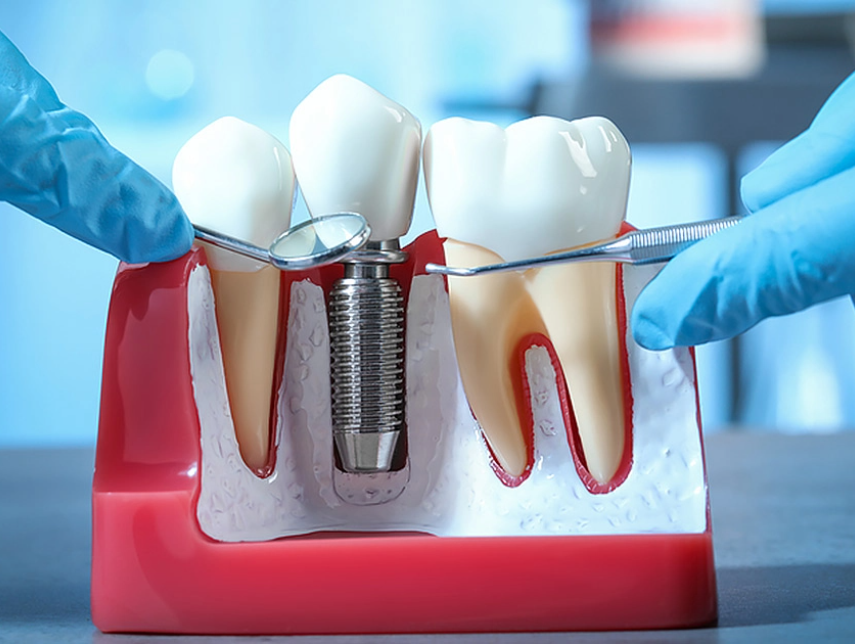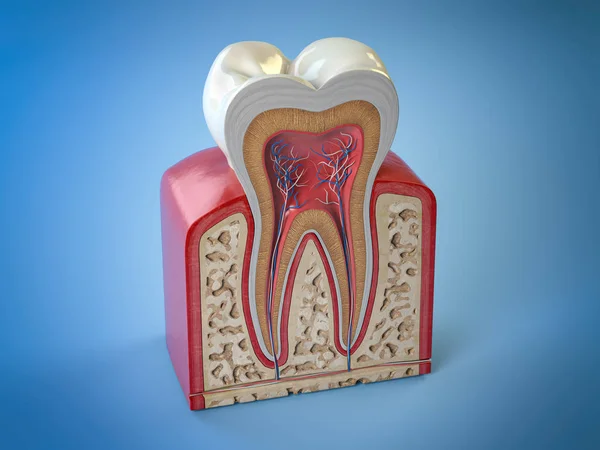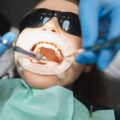Wisdom teeth often get a bad reputation, but they’re just another part of our anatomy—specifically, the third set of molars. These teeth typically emerge between the ages of 17 and 25, often called the “age of wisdom,” hence the name. While they may have been useful to our ancestors for chewing tough foods, modern diets and smaller jaws often make them more of a hindrance than a help.
Table of Contents
ToggleUnderstanding when wisdom teeth removal is necessary can save you from severe dental complications down the line. For some people, these teeth grow in perfectly fine, causing no trouble at all. But for many others, wisdom teeth can lead to pain, infection, and misalignment, making their removal essential.
This guide breaks down everything you need to know—from recognizing signs that removal is needed to prepare for surgery and recovery. Whether you’re experiencing symptoms or just want to plan ahead, this article will help you make an informed decision about your dental health.
What Are Wisdom Teeth?
Wisdom teeth, also known as third molars, are the last set of molars located at the back of your mouth. These teeth typically make their appearance during late adolescence or early adulthood, usually between the ages of 17 and 25.
Their primary function is to assist in grinding and chewing tough foods. Historically, our ancestors relied on these molars to break down fibrous plants and raw meat. However, with advancements in cooking methods and dietary changes, these teeth have become less useful in modern times.
Interestingly, some people never develop wisdom teeth, while others may have one to four or even extra ones known as supernumerary wisdom teeth. The variability in their development is largely due to genetics and evolutionary changes.
Why Do Wisdom Teeth Cause Problems?
Despite their natural purpose, wisdom teeth often create more problems than they solve. One of the primary reasons is that human jaws have become smaller over time due to dietary changes, leaving little room for these latecomers to emerge properly.
Key problems include:
- Impaction – When a wisdom tooth is unable to fully emerge, it becomes trapped beneath the gums or jawbone.
- Crowding – Limited space can push adjacent teeth out of alignment, causing bite issues.
- Infections – Partially erupted teeth are harder to clean, making them prone to bacteria buildup, infections, and gum diseases like pericoronitis.
- Cysts and Tumors – Impacted teeth can sometimes lead to cyst formation, which may damage the surrounding bone and tissues.
Because of these complications, dentists often recommend preemptive removal before symptoms worsen.
Signs You May Need Wisdom Teeth Removal
Recognizing early warning signs can prevent major dental issues. If you experience any of the following, it might be time to consult your dentist:
- Pain or Discomfort – Persistent pain at the back of your mouth could indicate impaction.
- Swelling and Redness – Inflamed gums around the tooth might signal an infection.
- Difficulty Chewing – If chewing causes discomfort or pressure, your wisdom teeth may be misaligned.
- Jaw Stiffness – Limited jaw movement can indicate underlying problems with the teeth or jawbone.
- Bad Breath or Taste – Trapped food and bacteria can cause chronic bad breath or an unpleasant taste.
Even if symptoms aren’t severe, monitoring these issues early can prevent complications down the road.
Medical Conditions Related to Problematic Wisdom Teeth
Problematic wisdom teeth can trigger a range of medical conditions, including:
- Pericoronitis – This infection occurs when the gum tissue around a partially erupted tooth becomes inflamed, causing pain, swelling, and difficulty opening the mouth.
- Tooth Decay – Because wisdom teeth are hard to clean, they often develop cavities and contribute to oral infections.
- Gum Disease – Bacteria buildup around impacted teeth can spread, leading to gum diseases such as gingivitis or periodontitis.
- Cysts and Tumors – Impacted wisdom teeth can develop cysts that damage the jawbone, nerves, and nearby teeth.
- Bone Loss – In severe cases, untreated infections may lead to bone deterioration around the affected area.
Understanding these risks emphasizes the importance of early diagnosis and timely treatment.
When Is Wisdom Teeth Removal Necessary?
Wisdom teeth removal is often recommended in the following cases:
- Impaction – Teeth that are trapped under the gumline or growing sideways are best removed to prevent pain and infections.
- Crowding – When there’s no room for the teeth to emerge properly, removal can protect the alignment of other teeth.
- Recurring Infections – Persistent swelling or infections suggest that removal is the safest option.
- Preventive Measures – In cases where orthodontic treatments are planned, dentists may recommend removal to avoid interference.
Not all wisdom teeth require extraction, but regular dental exams can help you make an informed decision about whether surgery is necessary.
How Is Wisdom Teeth Removal Diagnosed?
Diagnosing whether wisdom teeth removal is necessary involves a thorough evaluation by your dentist or oral surgeon. This process typically includes:
1. Dental Examination
Your dentist will begin with a physical examination, checking for visible signs of swelling, redness, or misalignment. They may also assess your bite and jaw movement to identify any discomfort or stiffness.
2. X-Rays and Imaging Tests
Dental X-rays are the most reliable method to evaluate the position of your wisdom teeth and their impact on surrounding structures. These images can reveal:
- Whether the teeth are impacted
- The direction in which they’re growing
- Potential crowding or pressure on adjacent teeth
- Presence of cysts, tumors, or infections
3. Symptom Evaluation
If you report pain, swelling, or other symptoms, the dentist will assess the severity and determine whether the wisdom teeth are the root cause.
4. Consultation with an Oral Surgeon
For complex cases, your dentist may refer you to an oral surgeon who specializes in extractions. They may perform additional tests to evaluate nerve placement and bone density, ensuring a safe procedure.
Types of Wisdom Teeth Impaction
Wisdom teeth impaction occurs when these molars cannot emerge properly due to lack of space or obstruction. There are several types, each presenting unique challenges:
1. Soft Tissue Impaction
In this case, the wisdom tooth breaks through the gum but doesn’t fully emerge. A flap of gum tissue may cover the tooth, making it prone to infection and inflammation.
2. Partial Bony Impaction
Here, the tooth is partially trapped in the jawbone, making it difficult to clean. This type of impaction often leads to infections and decay.
3. Complete Bony Impaction
This is the most severe form, where the tooth is completely encased within the jawbone. Surgery is usually required to extract it, and recovery might take longer due to the complexity of the procedure.
Recognizing the type of impaction helps dentists plan the most effective surgical approach to minimize risks.
The Wisdom Teeth Removal Procedure
1. Preparation
Before the surgery, your dentist will discuss anesthesia options, which may include:
- Local Anesthesia – Numbs the area but keeps you awake.
- Sedation Anesthesia – Keeps you relaxed or lightly asleep.
- General Anesthesia – Used for complex cases, where you’ll be fully unconscious.
Pre-surgical instructions may include avoiding food or drink for several hours before the procedure.
2. Step-by-Step Procedure
- Incision – The surgeon makes a small incision in the gum to expose the tooth and bone.
- Tooth Removal – If the tooth is impacted, it may be divided into smaller sections for easier extraction.
- Cleaning the Site – The area is cleaned to remove debris or bacteria.
- Stitching the Wound – The surgeon may use dissolvable stitches to close the incision.
- Gauze Application – Gauze is placed to control bleeding and promote clot formation.
3. Post-Surgery Care
Your dentist will provide detailed aftercare instructions to prevent complications, which often include:
- Applying ice packs to reduce swelling
- Taking prescribed pain medications and antibiotics
- Avoiding smoking and drinking through a straw to prevent dry socket
Recovery After Wisdom Teeth Removal
Recovering from wisdom teeth removal typically takes 1–2 weeks, depending on the complexity of the extraction. Here’s a timeline to help you understand the process:
Day 1–2: Initial Healing Phase
- Swelling and Bleeding – Mild bleeding is common during the first 24 hours.
- Pain Management – Use prescribed or over-the-counter medications to control discomfort.
- Rest and Ice Packs – Apply ice packs on your cheeks to reduce swelling.
Day 3–7: Tissue Repair
- Swelling should gradually decrease.
- Begin rinsing your mouth with warm saltwater to prevent infection.
- Stick to soft foods like yogurt, smoothies, and soups to avoid irritation.
Week 2 and Beyond
- Stitches dissolve or are removed by your dentist.
- Most people return to normal activities, but heavy exercise should still be avoided until full healing.
- Monitor for signs of infection, such as pus, fever, or worsening pain.
By following these recovery guidelines, you can minimize the risk of complications and heal faster.
Potential Risks and Complications
While wisdom teeth removal is generally safe, it does carry some risks:
1. Dry Socket
This painful condition occurs when the blood clot protecting the extraction site is dislodged, exposing the bone and nerves. Symptoms include severe pain and bad breath. Treatment involves cleaning the area and applying a medicated dressing.
2. Infection
Bacteria can enter the surgical site, leading to swelling, pain, and discharge. Antibiotics and proper hygiene can usually resolve this issue.
3. Nerve Damage
Rarely, the nerves near the extraction site may be damaged, causing temporary or permanent numbness in the lips, tongue, or chin. Surgeons take extra care to avoid this outcome during the procedure.
4. Prolonged Bleeding
Excessive bleeding may occur if the wound doesn’t clot properly. Avoiding straws and vigorous rinsing helps prevent this complication.
Understanding these risks allows patients to take proactive steps toward a smooth recovery
Alternatives to Wisdom Teeth Removal
While wisdom teeth removal is often the recommended course of action, there are cases where alternatives may be considered. Dentists evaluate each situation based on symptoms, X-rays, and the patient’s overall oral health.
1. Monitoring and Regular Check-Ups
- Active Monitoring – Some wisdom teeth may emerge without causing problems, especially if there is adequate space in the jaw. Dentists may opt for regular monitoring through X-rays and physical exams to track their development.
- Non-Surgical Management – Mild discomfort or inflammation can sometimes be managed with antibiotics and improved oral hygiene rather than surgery.
2. Orthodontic Treatments
- Wisdom teeth causing minor crowding may be treated with braces or retainers to realign teeth without extraction.
- In cases where the wisdom teeth are not fully erupted, orthodontic treatments may help create space for them to grow properly.
3. Pain Management and Medication
- Temporary discomfort caused by partially erupted wisdom teeth can often be alleviated with anti-inflammatory medications or painkillers.
- Medicated mouthwashes or topical gels can reduce swelling and fight infection.
4. Surgical Alternatives
- Instead of full extraction, dentists may recommend coronectomy, a procedure where only the top portion of the tooth is removed, leaving the roots intact to avoid nerve damage.
While these alternatives may work in some cases, they are typically considered temporary fixes, and removal is often advised to avoid long-term complications.
Costs and Insurance Coverage
The cost of wisdom teeth removal can vary widely based on factors such as the complexity of the extraction, the type of anesthesia used, and geographic location.
1. Average Costs
- Simple Extraction – $75–$200 per tooth
- Surgical Extraction (Impacted Tooth) – $225–$600 per tooth
- General Anesthesia or Sedation – Additional $200–$500
2. Insurance Coverage
- Many dental insurance plans cover a significant portion of the cost for medically necessary extractions.
- It’s important to confirm coverage details, including deductibles, co-pays, and annual limits.
3. Payment Plans and Assistance
- Some dental offices offer financing plans to help spread out costs.
- Programs like CareCredit provide flexible payment options.
- Low-income individuals may qualify for discounted services through community clinics or dental schools.
Planning ahead and discussing costs with your dentist can prevent financial stress later.
Myths and Misconceptions About Wisdom Teeth Removal
1. “Everyone Needs Their Wisdom Teeth Removed.”
- Truth – Not all wisdom teeth need removal. If they are healthy, fully erupted, and properly aligned, extraction may not be necessary.
2. “Wisdom Teeth Removal is Extremely Painful.”
- Truth – Modern anesthesia and sedation techniques make the procedure virtually painless. Post-surgery discomfort can be managed effectively with medications.
3. “You Should Wait Until You Experience Pain.”
- Truth – Many dentists recommend preventive removal to avoid future problems, even if there’s no pain initially. Waiting may lead to complications like infections or cysts.
4. “Recovery Takes Months.”
- Truth – Most patients recover fully within 1–2 weeks. Complications are rare when proper aftercare instructions are followed.
Debunking these myths helps patients make informed decisions without unnecessary fear.
Preventive Measures to Avoid Complications
Taking preventive steps can minimize the risk of complications related to wisdom teeth:
1. Regular Dental Check-Ups
- Routine dental visits allow dentists to monitor the development of wisdom teeth and recommend early intervention if necessary.
2. Early Intervention
- Removing wisdom teeth before symptoms develop can prevent impaction, infections, and misalignment.
3. Good Oral Hygiene Practices
- Brushing and flooring regularly, especially around the back molars, reduces the risk of decay and gum disease.
- Using an antibacterial mouthwash can help keep the area clean.
4. Healthy Lifestyle Choices
- Avoid smoking and excessive alcohol consumption, as these can delay healing and increase infection risks after surgery.
Adopting these habits keeps your teeth and gums in optimal health, even if your wisdom teeth are left intact.
Final Thoughts on Wisdom Teeth Removal
Wisdom teeth removal is a common dental procedure that often prevents significant oral health problems. While some people may never experience issues with their wisdom teeth, others face complications such as impaction, infection, and overcrowding that necessitate extraction.
Early detection and treatment are key to minimizing pain and preventing long-term damage. Consulting a dentist for regular check-ups and X-rays can help you decide the best course of action, whether it’s monitoring the teeth or scheduling surgery.
Taking care of your oral health doesn’t have to be intimidating. With modern advancements in dentistry, wisdom teeth removal is safe, effective, and relatively painless. If you’re unsure whether you need the procedure, don’t hesitate to ask your dentist for advice.












